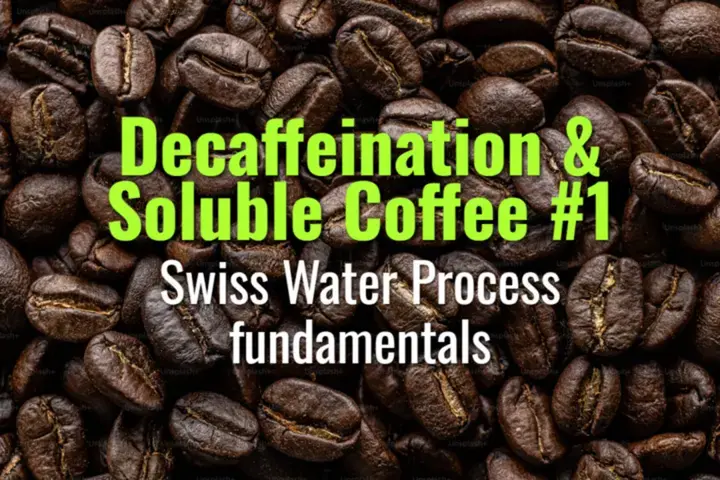Swiss Water Process fundamentals
How the Swiss Water Process removes caffeine from coffee beans using water and activated carbon, preserving flavor without chemical solvents.
- Coffee Basics Nerds
- 1 min read
Article 1 of 12 in Decaffeination & Soluble Coffee/

Overview
- The Swiss Water Process (SWP) is a 100% chemical-free method of decaffeination.
- Relies on water, solubility, and osmosis to extract caffeine.
- Popular in specialty coffee for preserving flavor integrity.
Step-by-Step Process
- Green Coffee Soak: Initial batch of green beans soaked in hot water, dissolving caffeine and flavor compounds.
- GCE Creation: This liquid (Green Coffee Extract) is separated and filtered through activated carbon to remove caffeine while keeping soluble flavor compounds.
- Osmotic Decaffeination: A fresh batch of green beans is immersed in the GCE. Because GCE is saturated with flavor compounds but caffeine-free, only caffeine diffuses out of beans into solution.
- Continuous Cycling: Process continues until beans are ≥97% decaffeinated (meeting U.S. standard).
- Drying & Packaging: Beans are dried, bagged, and shipped to roasters.
Advantages
- No Solvents: Uses only water and carbon filtration.
- Flavor Preservation: Because GCE already contains coffee solubles, flavor loss is minimized.
- Consumer Perception: Seen as clean, natural, and health-conscious.
Considerations
- More expensive than solvent methods.
- Requires strict control of water quality and filtration efficiency.
- Some delicate top notes may still be lost compared to regular coffee.
Summary
The Swiss Water Process decaffeinates coffee by leveraging water, osmosis, and carbon filtration instead of chemicals. It preserves much of the bean’s flavor profile, making it the preferred method in specialty markets.